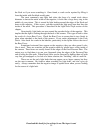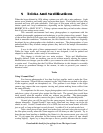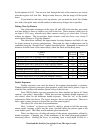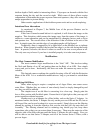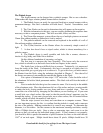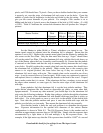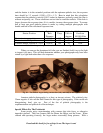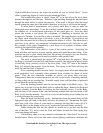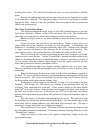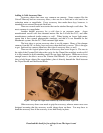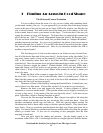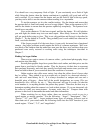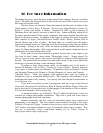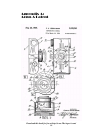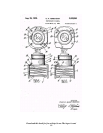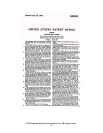Download this book for free at http://www.TheArgusA.com/
63
working filter factor. This factor will remain the same for every mask that is similarly
made.
Because of ambient dust and scratches, the mask will not last long before it needs
to be removed or replaced. The light-proof ribbon will also dry and begin to sprinkle
dust on the filter. Allow it to dry out completely after removing the filter to prevent the
ribbon from getting moldy.
The Closer Two-Position Focus
The focusing mechanism on the Argus A and A2B is limited because it can only
focus at two distances: Infinity to about 15ft, and about 15ft to 6ft. This modification
allows the user to temporarily shorten these distances to take closer pictures.
Before we begin, however, we must undertake a short discussion about the two-
position focus.
Focus, of course, can only be set for one distance. Depth of focus gives us a
range within which the sharpness of objects is still acceptable. Unfortunately, the
definition of “acceptable” has changed considerably since 1936. Adding to the confusion
is Argus’ constant redefinition of the distances for the close-up focus position. This
range started at 6ft to 12ft, then became 6ft to18ft, and finally settled at 6ft to 15ft.
The best action to take in order to determine the true focus distances is to test the
camera for the correct distance. Use the “Ground Glass” method described earlier in this
chapter to determine the distance at which the image is sharpest, and then try to take all
of your pictures from this distance. Don’t forget to use the smallest practical aperture
when taking pictures to increase your depth of focus.
This modification adjusts the original focusing distances into two closer ones.
The only drawback is that the photographer loses the ability to focus at infinity, albeit
temporarily.
Begin by unscrewing the four screws that hold the Neck and Shutter assembly to
the Body. To shorten the focus distances, the distance between the negative and the lens
must be increased. This can be accomplished by placing some sort of spacers between
the Body and the metal plate with the Locking Lugs.
These spacers can be made of any material, so long as it is hard and of uniform
thickness. Flat washers for 4-40 screws are available at any hardware store and are
excellent. Thin cardboard also work well. These spacers should not be much thicker
than 1/16
th
of an inch, however, because these screws support the Neck and a knock on
the Neck may rip the screws out. If the spacers are 1/16
th
of an inch thick, the infinity
position focusing distance drops to about 10ft and the close-up position distance drops to
about 4ft.
Place the spacers on the Body and reattach the four screws. The metal plate with
the Locking Lugs should now hover away from the Body. Line the outside edges of the
metal plate with an opaque adhesive tape, like black vinyl electrical tape. The tape is
necessary to prevent stray light from reaching the negative.
The modification is now done. The camera still has two focusing distances, but
they have been shortened considerably. To determine the new focusing distances, use the
“Ground Glass” method.
When you want to revert back to the original configuration, simply remove the
spacers and the tape.



